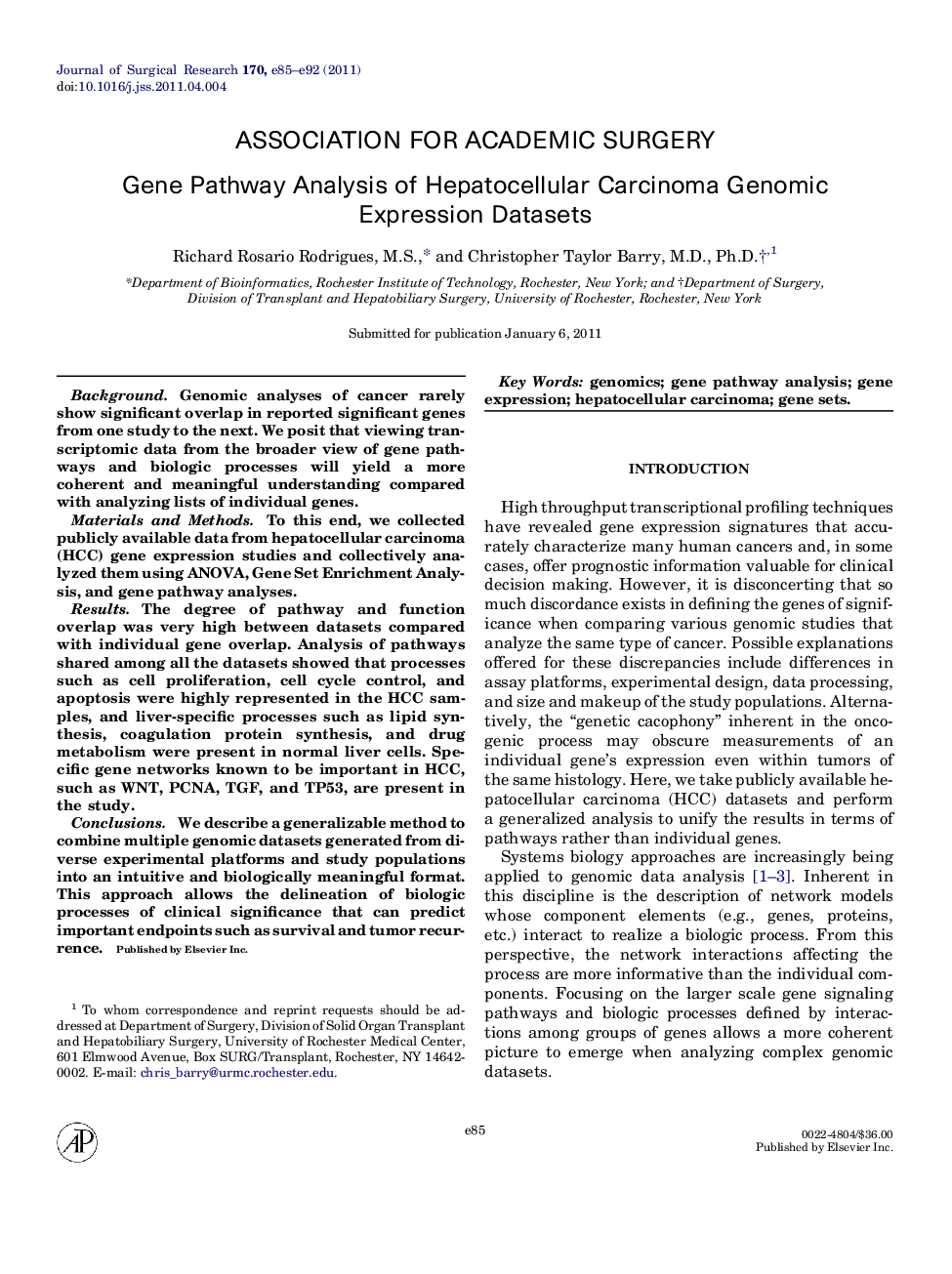| کد مقاله | کد نشریه | سال انتشار | مقاله انگلیسی | نسخه تمام متن |
|---|---|---|---|---|
| 4302299 | 1288454 | 2011 | 8 صفحه PDF | دانلود رایگان |

BackgroundGenomic analyses of cancer rarely show significant overlap in reported significant genes from one study to the next. We posit that viewing transcriptomic data from the broader view of gene pathways and biologic processes will yield a more coherent and meaningful understanding compared with analyzing lists of individual genes.Materials and MethodsTo this end, we collected publicly available data from hepatocellular carcinoma (HCC) gene expression studies and collectively analyzed them using ANOVA, Gene Set Enrichment Analysis, and gene pathway analyses.ResultsThe degree of pathway and function overlap was very high between datasets compared with individual gene overlap. Analysis of pathways shared among all the datasets showed that processes such as cell proliferation, cell cycle control, and apoptosis were highly represented in the HCC samples, and liver-specific processes such as lipid synthesis, coagulation protein synthesis, and drug metabolism were present in normal liver cells. Specific gene networks known to be important in HCC, such as WNT, PCNA, TGF, and TP53, are present in the study.ConclusionsWe describe a generalizable method to combine multiple genomic datasets generated from diverse experimental platforms and study populations into an intuitive and biologically meaningful format. This approach allows the delineation of biologic processes of clinical significance that can predict important endpoints such as survival and tumor recurrence.
Journal: Journal of Surgical Research - Volume 170, Issue 1, September 2011, Pages e85–e92